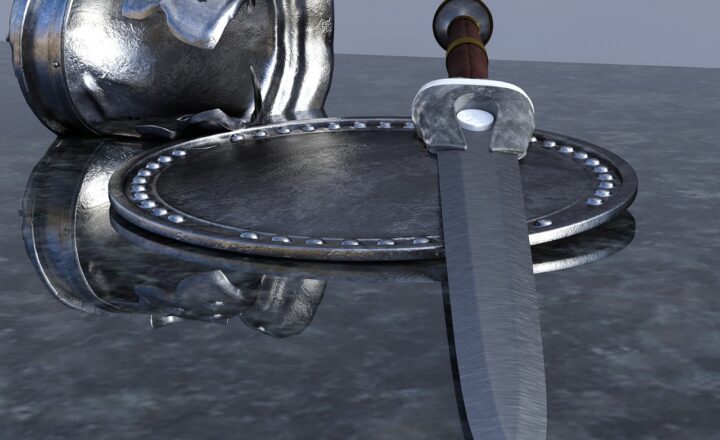The Most Ingenious Weapons Invented Throughout History and How They Shaped Wars
November 14, 2024

Throughout human history, the evolution of weaponry has been a driving force in shaping societies and determining the course of wars. The ingenuity of weapon design is often reflected in its effectiveness on the battlefield, and some weapons have left an indelible mark on the course of history. From ancient innovations to modern advancements, this article delves into some of the most ingenious weapons ever invented and analyzes how they shaped conflicts and warfare.
1. The Bow and Arrow: Precision and Range
The bow and arrow represents one of humanity’s earliest and most significant advancements in weaponry. Dating back to around 20,000 years ago, this weapon was primarily used for hunting before it became a staple of warfare. The range and accuracy of archers revolutionized how battles were fought, allowing armies to inflict damage from a safe distance.
The longbow, in particular, played a crucial role in European warfare during the Middle Ages. The English longbow, with its impressive range and penetration power, was instrumental during battles such as Agincourt in 1415. This weapon enabled English forces, often outnumbered, to decimate French knights before they could close in for hand-to-hand combat.
2. The Catapult: Siege Warfare Redefined
Developed in ancient Greece, the catapult epitomized the ingenuity of siege warfare. This weapon allowed armies to breach fortified walls from a distance, a game-changing capability in battles that involved walled cities. As technology advanced, various forms of catapults emerged, including the trebuchet.
The trebuchet was particularly revered for its ability to hurl heavy stones or incendiaries over great distances, causing destruction of walls and instilling fear in defenders. The Siege of Acre in 1191 during the Third Crusade showcased the effectiveness of this weapon, leading to significant tactical shifts in siege warfare. The catapult not only altered attacking strategies but also underscored the importance of engineering in warfare.
3. Gunpowder Weapons: The Dawn of a New Era
The invention of gunpowder in the 9th century transformed warfare forever. Initially used in fireworks, it soon evolved into an essential component of weaponry. The first firearms appeared in the 14th century, leading to weapons such as cannons and muskets.
The Battle of Pavia in 1525 demonstrated the devastating power of gunpowder weapons. The Spanish troops, utilizing cannons and arquebuses, effectively countered the French cavalry, marking the end of the age of knights dominating the battlefield. Gunpowder not only changed battlefield tactics but also initiated the decline of feudal armies, paving the way for professional military forces.
4. The Machine Gun: A Game-Changer in Warfare
In the late 19th century, the invention of the machine gun revolutionized warfare by increasing the rate of fire to unprecedented levels. The Gatling gun, one of the first successful machine guns, allowed a single operator to fire multiple rounds per minute, altering the landscape of battle.
During World War I, the machine gun became synonymous with trench warfare, leading to enormous casualties and shaping the strategies of both the Central Powers and the Allies. The Battle of the Somme (1916) is often cited as a grim evidence of the lethality that machine guns contributed, with thousands of troops falling under sustained fire. The machine gun not only changed how wars were fought but solidified the idea of total war, where entire societies became mobilized for conflict.
5. Nuclear Weapons: The Ultimate Deterrent
The development of nuclear weapons during World War II marked perhaps the most pivotal moment in military history. The bombings of Hiroshima and Nagasaki left unprecedented devastation and redefined the stakes of warfare. Nuclear power introduced a new era where the potential for mutually assured destruction became a central theme of the Cold War.
Nuclear weapons shifted military strategy from conventional warfare to deterrence, with countries investing in arsenals to prevent conflicts rather than engage in them. This balance of terror plays a crucial role in global politics even today, showcasing how a single invention can have lasting implications on international relations and military strategies.
6. Drones: The Warfare of the Future
In the modern era, drone technology has taken warfare to an entirely new level. Unmanned Aerial Vehicles (UAVs) allow military forces to engage in surveillance, reconnaissance, and targeted strikes without risking soldier lives. The use of drones in conflicts like those in Afghanistan and Iraq demonstrates how technology continues to evolve the battlefield.
Drones represent a significant shift in military tactics, enabling operations in hostile territories while minimizing casualties. However, the rise of drone warfare also raises ethical questions concerning remote killings and the potential for civilian casualties, showcasing the complex legacy of technological advancements in warfare.
Conclusion: The Continuing Impact of Ingenious Weapons
The history of weaponry is a testament to human ingenuity and the relentless pursuit of power. Each evolutionary step—whether it’s the bow and arrow or modern-day drones—has reshaped strategies, societies, and international relations. Analyzing these weapons allows us to appreciate how technological advancements affect conflicts and, consequently, the course of history.
As we look toward the future, it is critical to consider the implications of emerging technologies in warfare and how we can balance innovation with the responsibility that comes with such power. Understanding the past equips us to navigate the complexities of modern conflict and encourages a thoughtful discourse on the ethical dimensions of war.








